Research projects
- Applied Humanities: Genealogy and Politics, Anke te Heesen
-
The scientific and technological culture of divided Berlin as reflected in the museums, Arne Schirrmacher
- Socialist Medicine: An Alternative Global Health History, Dora Vargha
- Judging, Healing, Punishing: Psychiatric Politics and Forensic Governance in Imperial Berlin, 1880-1914, Eric Engstrom
- Data-History, Antonia von Schöning
-
The Non-Aligned Movement and Decolonization of the Museum Field: Yugoslav Anticolonial Museums (1961-1989), Nataša Jagdhuhn
-
The Development of Social Sciences in German Higher Education, Sachiko Iijima
-
The Use of the Image in the Works of Three Late Enlightenment Scholars, Léna Pican
Postgraduate Research Projects
- Visual Bureaucracies - A History of Knowledge of Art Dealing around 1900, Julia Bärninghausen
- The Site of Hygiene Exhibitions: Placing Dresden 1911 in the History of Knowledge, Christine Brecht
- Botanics in the Making (1500-1700): Communication and Construction of the Botanical Science in Early Modern Europe, Julia Heideklang
- Promoting the West. The Expositions of the US Exhibition Section in Germany, 1945-1960, Jonas Kühne
- Insects as a Global Commodity: Collecting Specimens in Early 20th Century Taiwan, Kerstin Pannhorst
- The Autograph as a Medium for History: Ludwig Darmstaedter's Autograph Collection and its Significance for the History of Science, Julia Steinmetz
- Ignorance in the Age of Text: Forbidden Knowledge among Common Readers in 18th and 19th Century Britain, Jakob Kaaby Hellstenius
- "It's all in the head." A comparative historical-epistemological history of neuroscience in the Decade of the Brain (1990-2000), Wessel de Cock
- Contestation of Knowledge in the Collection and Exhibition of Indigenous Objects by Catholic Mission Museums, Dwirahmi Suryandari
- The Exhibition Catalog Women Artists International 1877-1977 as Archive and Catalyst of Transnational Feminisms. A Global Object History, Marie van Bömmel
Applied Humanities: Geneaology and Politics, Anke te Heesen
Her research focuses on the materiality of knowledge-based objects located between science and everyday life and their application-oriented dissemination. In the research group “Applied Humanities”, she will follow the history of interview-based life course research, which as a historical concept experienced its first boom in early sociology and is again becoming politically effective today. For further information visit the homepage of the DFG Kollegforschungsgruppe Applied Humanities.
The scientific and technological culture of divided Berlin as reflected in the museums, Arne Schirrmacher
Not only literature, theatre, film, art and music shaped the self-understanding and identity of people in modern societies, but also science and technology, which increasingly determined them. A comprehensive cultural history should therefore include the culture of science and technology. Berlin and its post-war development seem predestined for a more profound understanding of these societal and political conditions. After all, this is the place where two systems collided after 1945 and where, in a city that was divided but always closely related to one another between its parts, cultural competition took place in various constellations of permeability and isolation. In the atomic and space age and in the times of Sputnik and the "scientific-technical revolution", this competition was fought out, especially in the arena of science and technology. Just as there was a specific Berlin music life, an art, cinema and literature scene and a theatre landscape, there was a science and technology culture in the form of museums and exhibitions, too. Their place in Berlin's cultural history has so far remained open. The project aims to fill this desideratum for the post-war period and to analyse the institutions of exchange and knowledge circulation between science and society - in particular, museums, exhibitions and other forms of public presentation of science and technology such as observatories and science centres.
Socialist Medicine: An Alternative Global Health History, Dora Vargha
 Global health histories are framed mainly through American, colonial and liberal perspectives, even as some contributions of the socialist world, e.g. in smallpox eradication, have been acknowledged. The omission of socialist contexts, however,
Global health histories are framed mainly through American, colonial and liberal perspectives, even as some contributions of the socialist world, e.g. in smallpox eradication, have been acknowledged. The omission of socialist contexts, however,distorts our understanding of what global health is. Many parts of the socialist world, like China or Czechoslovakia, provided different approaches to international and global health, e.g. in rural health or epidemic management. Although there was not one socialist template, diverse framings of socialist medicine played major roles in shaping and contesting global practices.
A systematic analysis of socialist medicine and international health through global case studies integrates missing expert networks, political agendas, public health models and diplomatic agreements in global health history. This work, in turn, allows us to rethink concepts such as socialism, medical aid, solidarity, development, socialist medical research and health
provision.
Picture credits: Budapest, 16. July 1958. To Shung Man North Korean paediatrician with Mária Hubai Hungarian nurse and a young patient at the I. Pediatric Clinic in Budapest. MTI Photo: Mária Lónyai. Under extended license agreement.
Judging, Healing, Punishing: Psychiatric Politics and Forensic Governance in Imperial Berlin, 1880-1914, Eric Engstrom
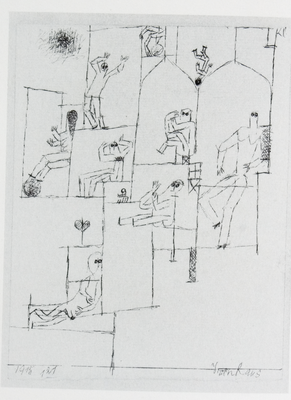
The project explores the multifaceted panoply of forensic-psychiatric entities in the Prussian capital prior to World War One. It is structured around three forensic spaces occupied by the criminally insane: the courtroom, the hospital, and the prison. The project analyzes the overlapping jurisdictions and regulative priorities governing the relationship between these three cultural spaces. It draws on an ensemble of legal decrees, administrative practices, expert and public discourses, as well as the historic traces of forensic-psychiatric subjects themselves to triangulate these spaces and understand what it meant to judge, heal, and punish the criminally insane in Imperial Berlin.
Picture Credits: SK Bern: Paul Klee, Catalogue Raisonné, vol. 2. Bern 2000. Abb. 1454.
Data-History, Antonia von Schöning
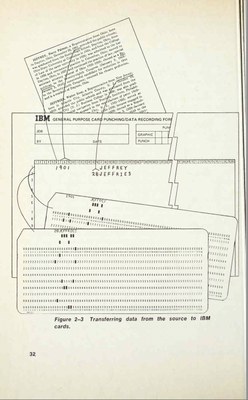 My research project addresses Digital History from the vantage points of the history of science and media history. It centers on the quantitative, computer-assisted historiography pursued in France, the United States, and Western Germany from the 1950s until the 1980s. Following an ethnographical approach, my focus is on the media technology these historians were working with, their specific practices in pursuing their quantitative historiographic work, and the question of how the computer-assisted procedures they applied to their research shaped the processes of producing knowledge and the “workshop” of History: How did the use of these media evolve to become Digital History? When Big Data found its way into the field of historical research, how did this contribute to new research questions being asked and how did this change established methods such as source criticism? What arguments were made in the debates concerning the development of artificial intelligence and the purported replacement of human historians as subjects by a machine? In reconstructing the historical debate on the introduction of the computer, I am looking to critically examine the claims and promises of Digital History today.
My research project addresses Digital History from the vantage points of the history of science and media history. It centers on the quantitative, computer-assisted historiography pursued in France, the United States, and Western Germany from the 1950s until the 1980s. Following an ethnographical approach, my focus is on the media technology these historians were working with, their specific practices in pursuing their quantitative historiographic work, and the question of how the computer-assisted procedures they applied to their research shaped the processes of producing knowledge and the “workshop” of History: How did the use of these media evolve to become Digital History? When Big Data found its way into the field of historical research, how did this contribute to new research questions being asked and how did this change established methods such as source criticism? What arguments were made in the debates concerning the development of artificial intelligence and the purported replacement of human historians as subjects by a machine? In reconstructing the historical debate on the introduction of the computer, I am looking to critically examine the claims and promises of Digital History today.
Abb.: Edward Shorter, The Historian and the Computer. A Practical Guide, Englewood Cliffs: Prentice-Hall 1971, S. 32.
The Non-Aligned Movement and Decolonization of the Museum Field: Yugoslav Anticolonial Museums (1961-1989), Nataša Jagdhuh
The Development of Social Sciences in German Higher Education, Sachiko Iijima
Sachiko Iijimas main focus is on research relating to the development of social sciences in German higher education in recent years. In addition, there are necessary analyses and additional interviews that took place with former contacts. Iijima has planned additional interviews at two other universities (MLU Halle, University of Leipzig).
The results of her projects are to be published in the Japanese sociological literature at a later stage.
The Use of the Image in the Works of Three Late Enlightenment Scholars, Léna Pican
Léna Pican's dissertation examines the use of the image in the works of three late Enlightenment scholars: Johann Wolfgang von Goethe (1749-1832), particularly in his research on botany and comparative anatomy; the philanthropist and educator Johann Bernhard Basedow (1724-1790), an advocate of sensual education; and the Swiss pastor Johann Kaspar Lavater (1741-1801), the founder of physiognomics, the study of the moral qualities of individuals based on their physical features. Moreover, the image is seen not only as a central element in the work of these three figures but also as a tool for understanding the underlying forms of sociability. The analysis is therefore not limited to the published works but also extends beyond the correspondence to the networks of illustrators who sometimes worked with these personalities at the same time, such as Daniel Chodowiecki (1726-1801) or Johann Rudolf Schellenberg (1740-1806).
Visual Bureaucracies – A History of Knowledge of Art Dealing around 1900 (working title), Julia Bärnighausen
 The dissertation project explores a series of photographs attributed to the Galleria Sangiorgi in Rome and recently rediscovered in the decorative arts section of the photo library of the Kunsthistorisches Institut in Florence – Max-Planck-Institute. On account of their strikingly complex materiality and their revealing visual qualities, they open up a trans-temporal network of different actors, including the photographs themselves as historically shaped and mobile “photo-objects”.
The dissertation project explores a series of photographs attributed to the Galleria Sangiorgi in Rome and recently rediscovered in the decorative arts section of the photo library of the Kunsthistorisches Institut in Florence – Max-Planck-Institute. On account of their strikingly complex materiality and their revealing visual qualities, they open up a trans-temporal network of different actors, including the photographs themselves as historically shaped and mobile “photo-objects”.
The Galleria Sangiorgi was founded by the Italian entrepreneur Giuseppe Sangiorgi (1850–1928) at the Palazzo Borghese in Rome in 1892. It soon became one of the world’s largest and most successful art-dealing and auction houses. Today it is almost unknown amongst historians and art historians. Like many of his contemporaries, Sangiorgi kept a workshop where the antiquities from his collection were reproduced for sale. The photographs, which were used as reference copies, communication devices and samples, circulated amongst collectors, art dealers, artists and photographers inside and outside the gallery and between its representations in New York, Paris and London. Through partly unknown itineraries they were spread across different archives. A large holding of both photographs and drawings deriving from Sangiorgi has been preserved at the photo library of the Fondazione Zeri in Bologna. The Florentine photo-archive constitutes yet another (epistemic) layer in the sedimentation of these documents, which took on a whole new set of meanings within the context of an art-historical image collection.
The thesis attempts to reconstruct the history of the Sangiorgi family and their gallery as well as examine practices of art-dealing around 1900. This work will be underpinned by a series of interviews and archival research in Italy, France and Germany as well as in the USA and in the UK. Above all, the case study aims to uncover the epistemological potential that lies within photographs if they are not only considered as images but also as material and “three-dimensional” objects with their own biographies.
Picture Credits: Mirror (1st h. 18th c.), albumen print on cardboard, unidentified photographer (Galleria Sangiorgi, Rome), around 1900, 26 x 13,7 cm (cardboard), inv. no. 615786, dep. ”Kunstgewerbe” in the photo library, Kunsthistorisches Institut in Florenz – Max-Planck-Institut.
The Site of Hygiene Exhibitions: Placing Dresden 1911 in the History of Knowledge
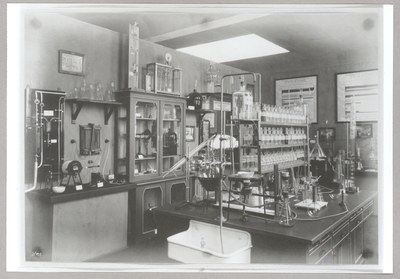
While hygiene exhibitions can be traced back to the 1870s, most historians have situated them in the context of the twentieth century’s health education and body politics, especially in the German case. Thus, the fact that these object lessons addressed and involved not only lay audiences but also a whole range of scientific experts remained largely unacknowledged.
Focussing on the Internationale Hygieneausstellung Dresden 1911, one of the greatest exhibitions of its genre at the time, the project explores the historical contingencies and meanings of both modes of knowledge presentation, mass instruction as well as science communication. It focuses on the specific actors and practices of exhibiting and thereby raises the following questions: How were scientific instruments and objects to be shown and seen in the different sections of Dresden 1911? Which modes of display – old and new, commercial or museological – were at stake? Where did the exhibits come from, be it their disciplinary, institutional, national or colonial points of origin? In which ways did scientists (e. g. bacteriologists, food chemists and industrial hygienists) participate, whether as exhibitors, curators, commentators and/or visitors? Besides substantial written record the project draws on selected photographs, maps, drafts and other graphical materials in order to place Dresden 1911 in the larger history of the presentation of scientific knowledge in exhibition spaces.
Picture credits: Laboratory exhibit in the nutrition hall of the Internationale Hygieneausstellung Dresden 1911. Deutsches Hygiene-Museum Dresden, Sammlung, DHMD 2001/196.60.
Botanics in the Making (1500–1700): Communication and Construction of the Botanical Science in Early Modern Europe, Julia Heideklang
 The dissertation project explores small forms within the context of botanical scientific writings in early modern Europe (1500–1700). A central premise of the project is the strong interdependence between scientific texts, on the one hand, as literary products under specific aesthetic and economic constraints and on the other hand the authors’ efforts to position themselves within both a literary tradition and their contemporary scientific community. The form and content of early modern scientific texts—and in particular their paratexts—are deeply shaped by contemporary scientific discourse; at the same time, they shape that very discourse. Despite their seemingly marginal position, in fact, paratexts play an important role as epistemic catalysts in defining botanical science and strengthening its independence in the early modern era. The project will analyze a selection of representative botanical works, especially the historiae and Kreut-terbücher, paying attention to title pages, dedicatory epistles, dedicatory poems and other prefaces and their relationship to the larger work. The project thereby aims to offer deeper insight into the communication strategies, literary composition and forms, by which early modern authors shaped their readers’ perception of their writings. More broadly, it seeks to understand the development of botanical science’s self-conception and how this self-conception, in turn, was conveyed to those in- and outside the scientific community.
The dissertation project explores small forms within the context of botanical scientific writings in early modern Europe (1500–1700). A central premise of the project is the strong interdependence between scientific texts, on the one hand, as literary products under specific aesthetic and economic constraints and on the other hand the authors’ efforts to position themselves within both a literary tradition and their contemporary scientific community. The form and content of early modern scientific texts—and in particular their paratexts—are deeply shaped by contemporary scientific discourse; at the same time, they shape that very discourse. Despite their seemingly marginal position, in fact, paratexts play an important role as epistemic catalysts in defining botanical science and strengthening its independence in the early modern era. The project will analyze a selection of representative botanical works, especially the historiae and Kreut-terbücher, paying attention to title pages, dedicatory epistles, dedicatory poems and other prefaces and their relationship to the larger work. The project thereby aims to offer deeper insight into the communication strategies, literary composition and forms, by which early modern authors shaped their readers’ perception of their writings. More broadly, it seeks to understand the development of botanical science’s self-conception and how this self-conception, in turn, was conveyed to those in- and outside the scientific community.
Picture credits: Title-page of Andrea Cesalpinoʼs De plantis libri XVI, Florentiae: Apud Georgium Marescottum 1583. (digitised by Zentralbibliothek Zürich: NB 721; http://dx.doi.org/10.3931/e-rara-37940)
Promoting the West. The Expositions of the US Exhibition Section in Germany, 1945-1960, Jonas Kühne
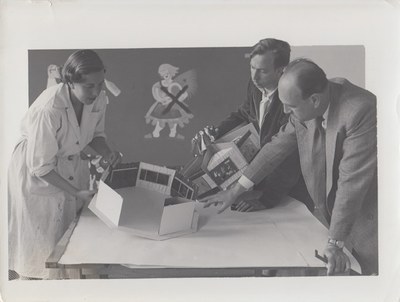 This research project studies the American exhibition program in Germany after World War II. It examines the expositions of the US Exhibition Section between 1945 and 1960. Despite their diversity in form, content and visual appearance they served a common objective. They facilitated the orientation and activation of the German audience in favour of a capitalist consumer society. They, on the other hand, intended to integrate the Federal Republic of Germany into the community of values of the transatlantic West during the early Cold War period.
This research project studies the American exhibition program in Germany after World War II. It examines the expositions of the US Exhibition Section between 1945 and 1960. Despite their diversity in form, content and visual appearance they served a common objective. They facilitated the orientation and activation of the German audience in favour of a capitalist consumer society. They, on the other hand, intended to integrate the Federal Republic of Germany into the community of values of the transatlantic West during the early Cold War period.
The study is focusing on three main points. First, the US Exhibition Section is described as a transnational curatorial organization, which neither had the purpose of collecting and presenting like a museum nor was it a part of performing or visual arts. For a better understanding of this kind of expositional work, this section will look into the organizational history, the transatlantic actor-network, and the production conditions under which the exhibitions were put on display.
Secondly, six illustrative exhibition ensembles will be examined at the level of design, content and reception: the travelling exhibition program in the American Information Centers (1947-49), the Marshall Plan exhibitions (1950-52), the Berlin-based expositions “ATOM” (1954), “Kleider machen Leute” (1955) and “Unbegrenzter Raum” (1956), and the trade fair booth on US agriculture at IKOFA in Munich (1958).
The exhibition analyses shall thirdly help to answer the following questions: How did the political environment of the Cold War shape the exhibitions? Against this background, how did the West and East German audiences perceive them? Which influences of the history of exhibitions before 1945 are reflected in the examined expositions? How did they adapt and refine preceding curatorial experiences? How did the US Exhibition Section shape the subsequent development of exhibiting in West Germany?
Picture credits: US Exhibition Section staff members with models of an agricultural exhibition, ca. 1947/48, Nuremberg, Germany. Estate Claus-Peter Groß, photographic collection Kunstbibliothek, SMB.
Insects as a Global Commodity: Collecting Specimens in Early 20th Century Taiwan, Kerstin Pannhorst
The project takes a closer look at the practices of collecting, processing, and trading insects in early 20th-century Taiwan, specifically the entanglement of practices surrounding research specimens and specimens collected for the decorative arts. In the „field“, in this case, the mid-altitude mountains of central Taiwan, diverse actors competed for specimens: Some desired insects for taxonomical and biogeographical descriptions, others for research into economically relevant species, and others for producing decorative objects. The dissertation explores whether scientific and artisanal practices stabilized each other, leading to the mass production of insect artefacts and insect knowledge.
 Early in the 20th century, Hans Sauter, a German entomologist and collecting entrepreneur based in Taiwan, collaborated with the first director of the German Entomological Museum in Dahlem towards the „mass-fabrication of knowledge“ about Taiwan's insect world. Tens of thousands of carefully packaged insects collected in the Japanese colony Taiwan were sent along global trading routes towards the goal of a successive publication of a „complete fauna of Formosa“. In the same period, Yasushi Nawa, a Japanese entomologist and entrepreneur, sent scores of insect collectors to the island. The animals served both for research into harmful and beneficial species and for the production of decorative objects such as paper fans or postcards made using butterfly specimens. He sold butterfly decorative art via mail order and in department stores in Japan and abroad. Fleas, beetles or butterflies became resources that were accumulated, traded and turned into artefacts – into „authentic“ representations of nature for research purposes or into aesthetic commodities. The project follows the insects from the field to the natural history museum respectively the department store. It focuses on the entanglement of the highly specialized practices involved and on the economies behind the global circulation of these fragile materials.
Early in the 20th century, Hans Sauter, a German entomologist and collecting entrepreneur based in Taiwan, collaborated with the first director of the German Entomological Museum in Dahlem towards the „mass-fabrication of knowledge“ about Taiwan's insect world. Tens of thousands of carefully packaged insects collected in the Japanese colony Taiwan were sent along global trading routes towards the goal of a successive publication of a „complete fauna of Formosa“. In the same period, Yasushi Nawa, a Japanese entomologist and entrepreneur, sent scores of insect collectors to the island. The animals served both for research into harmful and beneficial species and for the production of decorative objects such as paper fans or postcards made using butterfly specimens. He sold butterfly decorative art via mail order and in department stores in Japan and abroad. Fleas, beetles or butterflies became resources that were accumulated, traded and turned into artefacts – into „authentic“ representations of nature for research purposes or into aesthetic commodities. The project follows the insects from the field to the natural history museum respectively the department store. It focuses on the entanglement of the highly specialized practices involved and on the economies behind the global circulation of these fragile materials.
Picture credits: Packaging materials used by Hans Sauter to send Lepidoptera from Taiwan to Germany in the early 20th century. Museum für Naturkunde Berlin, coll. Lepidoptera and Trichoptera. Photo by Kerstin Pannhorst.
The Autograph as a Medium for History: Ludwig Darmstaedter's Autograph Collection and its Significance for the History of Science, Julia Steinmetz
This dissertation project focuses on the Ludwig Darmstaedter Autograph Collection of Science and Technology, one of the most extensive collections of handwritten material in the history of science. Created by chemist Ludwig Darmstaedter as a general collecting project around 1900, the Autograph Collection makes visible developments in research approaches to the history of science and technology through the small form of the autograph. As this work aims to show, collecting practices, media innovations, and contemporary discourses on the meaning and materiality of historical documents not only exerted a formative influence on this collection but also shaped how the autograph collection frames the very concept of history. The project contributes to the history of science and technology by focusing on the materials that enabled their creation around 1900.
Ignorance in the Age of Text: Forbidden Knowledge among Common Readers in 18th and 19th Century Britain, Jakob Kaaby Hellstenius
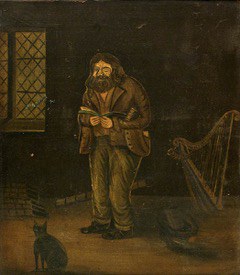 Hellstenius’ project is an attempt at untangling the interplay of the unknowledge and reading practices of British common readers in the 18th and 19th centuries. While common readers were berated by elites for reading “uninstructive” texts that did nothing to change their readers’ material and intellectual poverty — but instead deepened their ignorance — their reading was anything but a meaningless pastime.
Hellstenius’ project is an attempt at untangling the interplay of the unknowledge and reading practices of British common readers in the 18th and 19th centuries. While common readers were berated by elites for reading “uninstructive” texts that did nothing to change their readers’ material and intellectual poverty — but instead deepened their ignorance — their reading was anything but a meaningless pastime.
The project explores how common readers’ understandings of medicine, economics, intimacy, human nature, and more, were shaped by the texts they read, and their practices of reading and how this, far from ignorance, was knowledge which could run contrary to that of elites, legitimised by different epistemologies and ontologies. By taking the antithetical knowledge of common readers seriously, the project attempts to consider “ignorance” as part of the history of knowledge. Methodologically, the project will rely on a range of approaches, from traditional archival work to methods from science and technology studies as well as the digital humanities.
Photo credit: Llyfrgell Genedlaethol Cymru / The National Library of Wales
"It's all in the head." A comparative historical-epistemological history of neuroscience in the Decade of the Brain (1990-2000)
"It's all in the Head" comparatively examines the local entanglements of neuroscientific knowledge production on mental illness and political mental health reform projects in the Decade of the Brain of the 1990s. It focuses on the projects of the United States, the Netherlands, and Germany, but does so explicitly against the larger global context, particularly in Japan and the larger European framework of the European Commission.
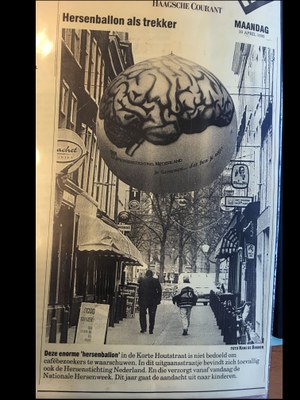 The proclamation of the "Decade of the Brain" by the U.S. Congress in July 1990 was followed by increases in funding and public attention for neuroscientific research worldwide. Although historians of science and science studies scholars have almost unanimously argued that an unprecedented global "neuro-turn" occurred in the 1990s, the local historical differences inherent in these national projects have thus far been mostly ignored.
The proclamation of the "Decade of the Brain" by the U.S. Congress in July 1990 was followed by increases in funding and public attention for neuroscientific research worldwide. Although historians of science and science studies scholars have almost unanimously argued that an unprecedented global "neuro-turn" occurred in the 1990s, the local historical differences inherent in these national projects have thus far been mostly ignored.
By comparatively examining these local developments within the global trend toward neuroscientific explanations of mental illness in the 1990s, the project aims to uncover the black box of the Decade of the Brain. It thereby connects historical research on three scientific and policy developments that accumulated in the 1990s but have mainly been studied in isolation: the rise of evidence-based medicine (EBM), market-oriented health reform projects, and big science projects in the life and human sciences such as the Human Genome Project, the Global Burden of Disease Study (GBD), and the Decade of the Brain.
By examining how the production of neuroscientific knowledge about mental illness has been shaped by entanglements with particular policy reform projects in different historical contexts, the project aims to help rethink the relationship between scientific research on mental health and policy today.
Photo Credit: Hans de Bakker, Haagsche Courant, 10.04.1995.
Contestation of Knowledge in the Collection and Exhibition of Indigenous Objects by Catholic Mission Museums
This project is intended to answer how indigenous knowledge is contested through the exchange of objects between indigenous groups and Catholic missionaries by looking at how the value and function of the objects changed. It focuses on the collection and presentation history of two museums in Indonesia that were founded and managed by Catholic missionaries or foundations - namely the Nias Heritage Museum in Nias, North Sumatra and Museum Bikon Blewut in Flores, East Nusa Tenggara and will focus on the period between late 19th century until after the Indonesian independence on the mid of 20th century.
The research aims to she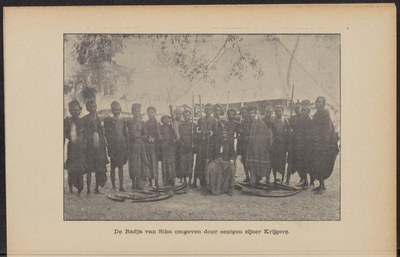 d light on how the Catholic Church and its missionaries responded to the cultural, social and political context in mission lands as manifested through material culture and museum practice, and how this affects the shift of knowledge in indigenous communities. These questions will be addressed through archival research and ethnographic methods.
d light on how the Catholic Church and its missionaries responded to the cultural, social and political context in mission lands as manifested through material culture and museum practice, and how this affects the shift of knowledge in indigenous communities. These questions will be addressed through archival research and ethnographic methods.
→ back to top
The Exhibition Catalog Women Artists International 1877-1977 as Archive and Catalyst of Transnational Feminisms. A Global Object History, Marie van Bömmel
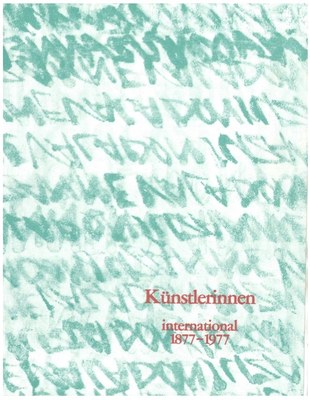
This dissertation project deals with feminist cultures of memory and strategies of transmission in the context of the seventies. Taking the Berlin exhibition Künstlerinnen international 1877-1977 as a starting point, it examines the catalogue of this controversial show as a catalyst and archive of transnational feminisms. The project undertakes a reconstruction of the network of artists, scholars, and activists involved in the catalogue's production. It examines the form-finding of their communicative concerns and measures them against the processes of reception in the women's movement, the bourgeois public, popular culture, and academia.
Exploring the potential of the catalogue as a material instigator of tradition, the project aims to trace processes of genesis, transfer, and loss of feminist knowledge and to productively confront different layers of time. This concern will also be pursued in conversation with contemporary witnesses. The project thus ties in with the historiographical program of the researched object and wants to critically develop it further in the self-reflexive testing of knowledge-transmitting structures.
Cover of the catalog for the exhibition Künstlerinnen international 1877-1977 © Arbeitsgruppe Frauen in der Kunst / nGbK – neue Gesellschaft für bildende Kunst
